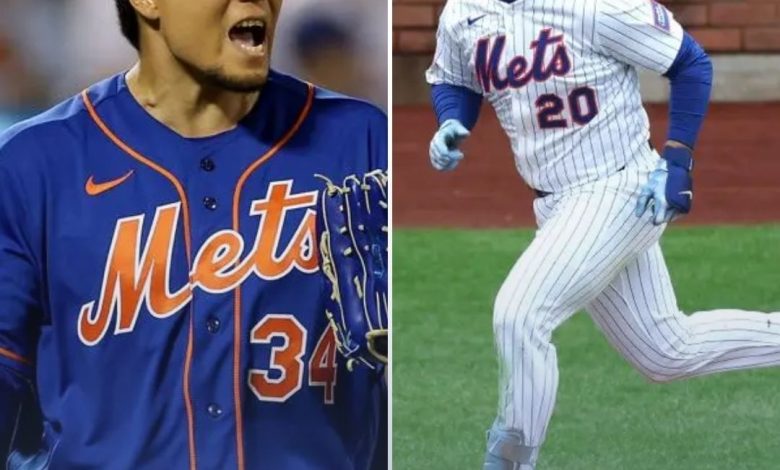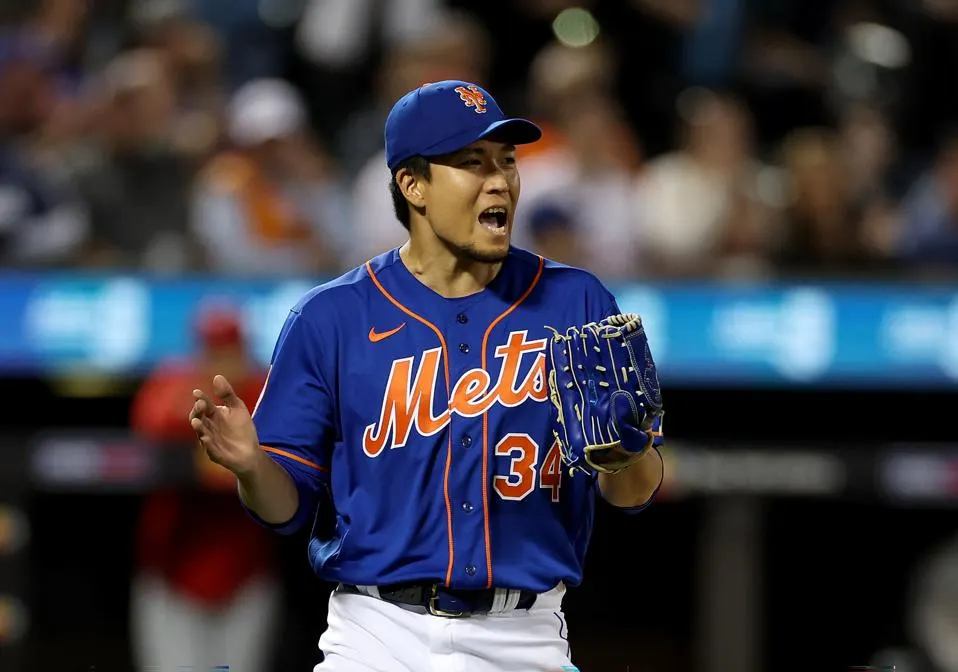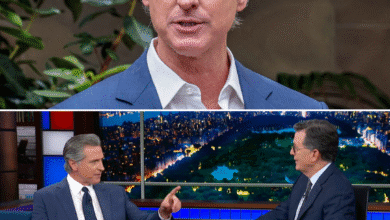What insiders are saying about the Mets — Pete Alonso uncertainty and a surprising Senga twist. DD


There is no bigger topic of the Mets’ offseason than Pete Alonso. The Mets want his power production but also need to get better defensively. Al Bello / Getty Images
LAS VEGAS — With the general managers’ meetings set to get underway this week, here are some early offseason notes on the New York Mets, based on conversations with industry sources.
Internal possibilities if the Mets don’t re-sign Pete Alonso
In the first-base market, Alonso stands out as the clear-cut best option by a landslide. Still, if the Mets bring him back, they’d have to balance his defensive deficiencies with his exceptional offensive profile, given president of baseball operations David Stearns’ stated goal to improve “run prevention.” That may include asking Alonso to start more games at designated hitter, as The Athletic previously reported.
Indeed, so much of the Mets’ offseason revolves around Alonso, an integral middle-of-the-order bat and homegrown star.
And if Alonso doesn’t return to the Mets?
Internal options exist. Some evaluators view first base as a position that players with experience at other spots can move to and generally figure things out. Similarly, some clubs choose to platoon at the position.
To those points, it wouldn’t be out of the question for the Mets to upgrade defensively at second base and ask Jeff McNeil, a left-handed batter, to play some first base (perhaps among other spots, given his versatility), people familiar with the club’s thinking suggested. It’s likely the club would also think about Mark Vientos (right-handed batter) and Brett Baty (a left-handed batter) as first-base options, too.

Jeff McNeil’s defensive versatility gives the Mets some options.Rich Storry / Getty Images
How much of an upgrade defensively would these options be over Alonso, whose range is limited and struggles with throws, but is an expert at picking balls out of the dirt?
As an aside, Stearns did something similar years ago with the Milwaukee Brewers, when he moved Keston Hiura from second base to first base and signed defensive wizard Kolten Wong to bolster the infield up the middle.
The Mets’ defense was particularly lacking on the right side of the infield and in the corner outfield spots. The Mets could end up asking left fielder Brandon Nimmo to spend more time at designated hitter, though the expectation at this juncture is for Juan Soto to stay in right field. Speculatively speaking, the Mets could entertain trade offers for Nimmo, but he holds a full no-trade clause within a contract that stretches five more seasons at $20.5 million annually.
Given the Mets’ defensive ambitions, it’s hard to see New York prioritizing Munetaka Murakami, the 25-year-old corner infielder and star from Japan. Though things may change depending on how markets develop, Kazuma Okamoto, another star from Japan set to make the jump to MLB, doesn’t seem like an immediate, primary target, either.
There is no bigger topic of the Mets’ offseason than Alonso. He is also part of a larger discussion within the Mets. They want to improve defensively and redeem themselves after an embarrassing miss of the playoffs. Can they re-sign Alonso while also improving run prevention on a team with other long-term commitments to Soto, Nimmo and Francisco Lindor?
Kodai Senga among pitchers generating interest

Senga is attracting trade interest from multiple teams, league sources said. Some clubs view Senga, 32, as an interesting buy-low candidate after he experienced an injury and ended the season in Triple A due to poor performance.
It is unclear, however, how open the Mets would be to trading him, though they’ve had conversations about their starting pitchers, including Senga, people briefed on the talks said.
The Mets’ rotation projects as something along the lines of Nolan McLean, Clay Holmes, Sean Manaea, David Peterson and Senga, with Brandon Sproat, Jonah Tong and Christian Scott lingering as other intriguing candidates.
The Mets are clearly in the market for help in their rotation, but league sources said it’s more likely they end up with one addition rather than two, given their crowded group — unless there’s some subtraction.
Senga is a tricky evaluation. Relative to the starting pitcher market, his contract — he is owed $28 million combined over the next two seasons with a club option for 2028 — is reasonable. There is upside; in three seasons, he boasts a 3.00 ERA and finished in the top-10 for the Cy Young Award as a rookie in 2023. But there is also concern; he is particular about his mechanics, he is coming off multiple injuries over the last two seasons and he had a 6.56 ERA in the second half last season (eight starts). Also, Senga moved from a full no-trade clause to a limited one this winter, in which he can block trades to 10 franchises.





